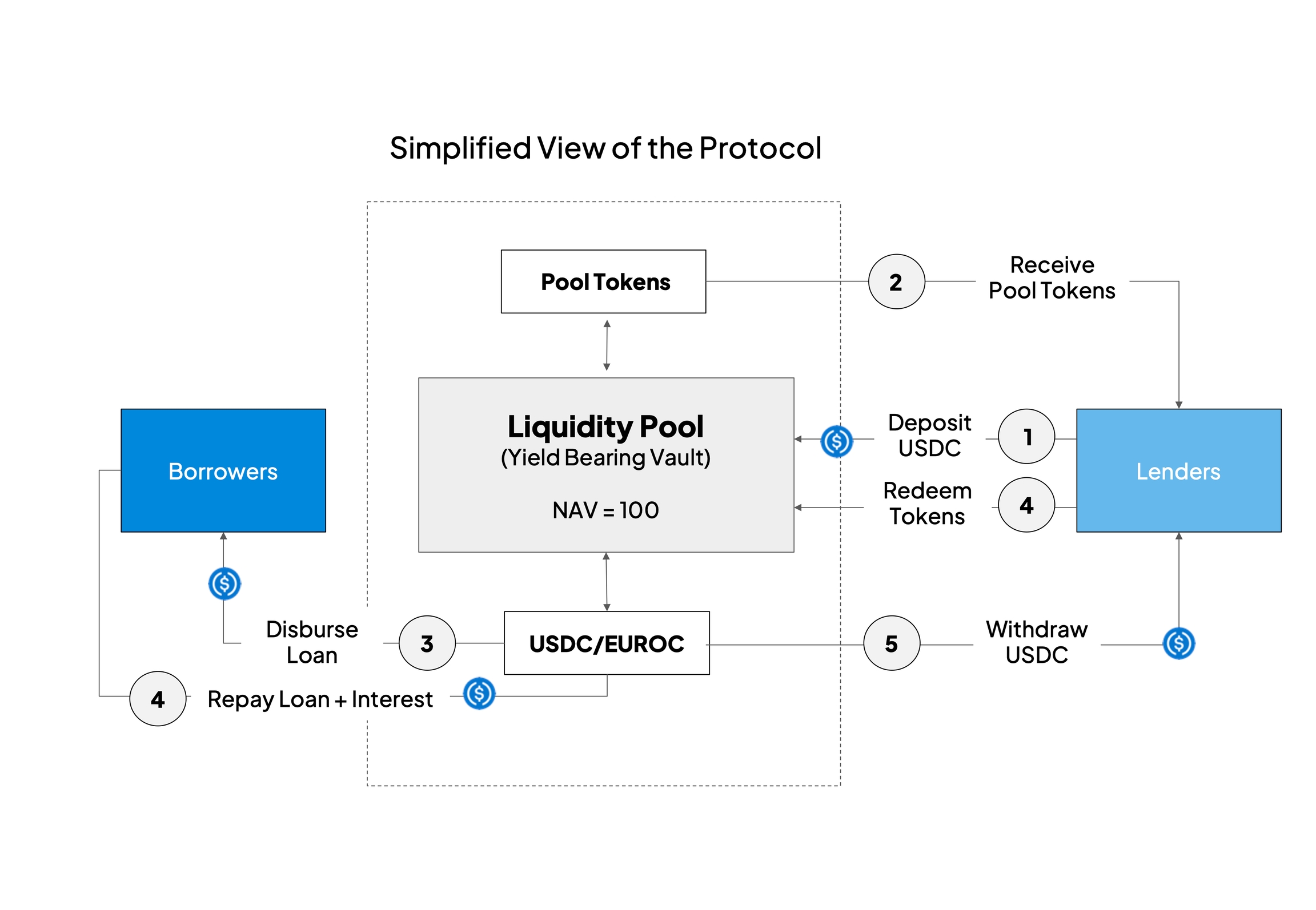⛓️Blockchain Protocol
Learn more about the blockchain protocol underpinning OpenTrade products.
OpenTrade's blockchain protocol is based on Perimeter, an open-source blockchain protocol developed by Circle Research, a division of Circle, to support USDC lending markets and applications. The protocol is largely built on composable, open-source standards, including ERC-20, ERC-4626.
The OpenTrade protocol is developed and maintained by Open Trade Technology Ltd. It has been modified extensively to support a nearly limitless variety of RWA and DeFi backed stablecoin yield vaults.
Overview
The protocol can support a wide variety of on-chain structured credit and lending products, including but not limited to:
Yield products involving both real world assets ("RWA") and digital assets
Collateralised and uncollateralized loans
Single-sided and multi-sided credit markets
Primary and secondary credit markets
Fixed rate and variable rate products
Fixed term and open-term products
We intend to continue to extend and enhance the protocol to support an increasingly wide variety of use cases across both RWAs and digital assets.
ERC-4626
The core of the protocol is based on ERC-4626, an open-source standard for yield bearing token vaults. It is an extension of ERC-20 token standard. It has been designed to optimise and unify the technical parameters of yield-bearing vaults.
It provides a standard smart-contract interface for tokenised yield-bearing vaults. A yield-bearing vault is a smart contract that allows users to deposit different ERC-20 tokens into a pool of tokens in exchange for vTokens (vault tokens). Vault tokens give their holders a claim on underlying asset tokens held by the vault, plus any profits the pool has earned, minus any losses, defaults, and fees.
Vault tokens can be converted to asset tokens, and asset tokens can be converted to vault tokens, with the exchange occurring at an exchange rate determined by the smart-contract.
The standard is fully described in EIP-4626 as published and maintained by Ethereum.org.
OpenTrade Implementation
When lenders deposit ERC-20 stablecoin tokens (USDC, EURC, USDT, etc) into the vault, they are issued ERC-20 tokens called vault tokens in return. This is done at the current exchange rate.
Each vault token represents a unit of ownership in the vault and its underlying assets, which are principally collateralised and uncollateralized USDC loans and USDC.
Loans are structured and disbursed to borrowers from these vaults. As loans are issued, loan repayments are made, and interest is accrued, the exchange of each vault increases, meaning the value of each vault token increases by a corresponding amount. If defaults occur, the exchange of each vault decreases, meaning each vault token decreases by a corresponding amount.
When a lender withdraws from the vault, they exchange their vault tokens for the underlying asset token (USDC) at the current exchange rate.
Learn More

Protocol Roles
Protocol Operator: The protocol operator is responsible for deploying, maintaining, and upgrading the protocol. Open Trade Technology Ltd. serves as the protocol operator.
Vault Admin: Specialised entities that create and manage vaults, source borrowers, and manage liquidity in the protocol. Open Trade Technology Ltd serves as the vault admin for all OpenTrade products.
Borrowers: Entities that receive stablecoin loans from liquidity pools and repay those loans plus interest. Borrowers on the OpenTrade platform are bankruptcy remote SPVs overseen by FCA regulated Five Sigma. Currently the only approved Borrower is OpenTrade SPC.
Lenders: Lenders provide liquidity by depositing tokenised cash (USDC and EUROC) to earn interest. Lenders are KYC’d Web3 institutions, businesses, and HNWI. For more information on who is eligible to become a Lender on OpenTrade, please see Eligibility Requirements.
Last updated